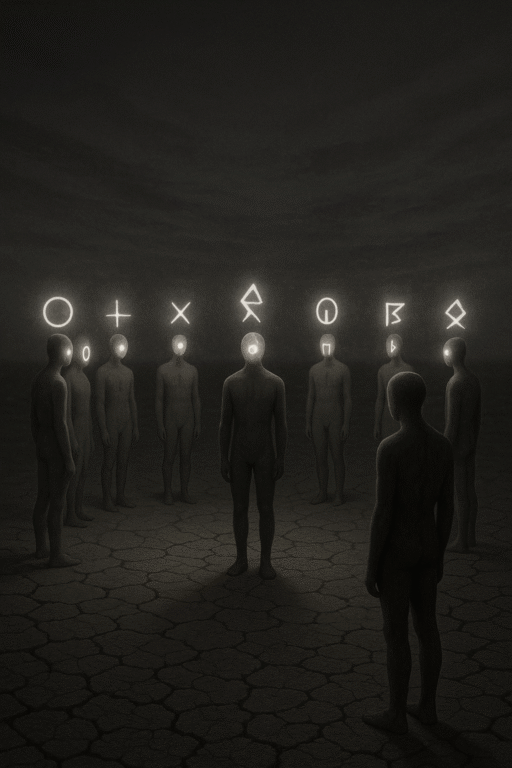Science
Language is a task
Language is often viewed as a tool for communication, a way to exchange information, tell stories, or express feelings. But beneath this common understanding lies a deeper, more complex structure that binds language to the core of human evolution, group dynamics, artistic performance, and power relations. Language is not just communication — it is a survival strategy, a social weapon, a form of recognition-seeking, and a scaffold for thought itself.

The Evolutionary Purpose of Language
From an evolutionary standpoint, language emerged not merely as a byproduct of intelligence but as a strategic adaptation. Early hominids faced complex challenges in coordinating group behavior — hunting, sharing resources, raising offspring. The brain evolved to map social relationships, anticipate others’ intentions, and form alliances. Language became the interface for these cognitive processes, allowing for rapid signaling and abstraction.
The mirror neuron system and prefrontal cortex developments made it possible to encode intentions, emotions, and future possibilities in symbolic form. In this sense, language was not just about describing the world — it was about constructing it socially. To belong to a tribe, you needed to master its vocabulary, its metaphors, its taboos.
Language, then, became an adaptive filter: those who could use it effectively gained trust, mates, protection, and access to resources. Those who couldn’t were left outside the group’s recognition system.
Language in Group Dynamics
In group dynamics, language acts as both glue and weapon. It forms the rules, identities, and hierarchies that define who belongs and who doesn’t. Every group — from primitive tribes to modern corporations — operates through shared vocabularies: jargon, slogans, memes, slurs.
Inclusion is signaled through language.
Example: slang among teenagers or professional jargon among scientists.Exclusion is enforced through language.
Example: ridicule, silence, or bureaucratic language barriers.
More importantly, language enforces synchronization. When people speak in similar tones, patterns, or idioms, they signal alliance. When their speech diverges, conflict or power difference is inferred. This makes language a regulatory system in group behavior — not just expressing ideas but creating compliance, status, and loyalty.
Language as Art — and Recognition as the Hidden Drive
Language also took on aesthetic forms — poetry, rhetoric, performance. But here, a deeper loop emerges: language as art is rarely about the message — it’s about the author. Artful language is a mirror in which the speaker wants to be admired. Whether in poetry, rap, or intellectual essays, the form is crafted to attract attention, stand out, and gain recognition.
Thus, language becomes a vehicle for recognition-seeking behavior:
A novelist uses metaphors not just to convey emotion but to show depth.
A philosopher constructs abstract terms to signal intellectual dominance.
A performer dramatizes dialogue to be remembered.
Language becomes theater. The content is the stage; the speaker is the actor seeking applause. The loop: Speak to be seen. Seen to be remembered. Remembered to gain status.
Language as Dominance — Mechanisms of Power
Language is also a tool of dominance. Its mechanisms are subtle but pervasive:
Reframing: Controlling the narrative by shifting terms. (e.g., calling war “peacekeeping”)
Obfuscation: Using complex language to create hierarchy. (e.g., legal or financial jargon)
Interruption: Dominating conversations by seizing rhythm and flow.
Labelling: Defining others before they define themselves. (e.g., calling someone a “loser” ends dialogue)
Sloganeering: Reducing complex realities into catchy lines to halt thought.
A politician saying, “Freedom isn’t free” activates emotional alignment and shuts down critique. A corporation calling layoffs “workforce optimization” hides violence under neutral language. These are examples of linguistic camouflage — dominance without detection.
Loops in Language — and the Concept of Form
The Recognition Loop operates silently in language. It works like this:
Speak → Receive feedback → Adjust speech to get more approval → Repeat.
A social media post is liked → the next post mimics the same tone → identity is shaped around performative language. Over time, language is no longer used to express truth but to attract recognition. The speaker becomes trapped — the loop reshapes thought itself.
Form, by contrast, escapes this loop. Form is language stripped of performance — a structure that serves necessity, clarity, or alignment. Form in language appears as:
A minimalist instruction manual
A haiku with no authorial ego
A legal clause designed for fairness, not obfuscation
A message that says exactly what it needs, no more
While loops are recursive, form is structural. Loops seek reward. Form seeks shape. To recognize form in language is to speak without the need to be seen.
Beyond the Noise: Reclaiming Language from the Loop
Language is not neutral. It is a biological, psychological, and social instrument embedded in loops of survival, status, and performance. From evolution to modern politics, from love poems to hate speech, language structures the world we inhabit — and often, it blinds us from seeing the form behind it.
To reclaim language is to exit the recognition loop and speak not for applause but for architecture — to build meaning where performance used to reside. In the age of infinite signals, language without loops becomes the rarest form of truth.

